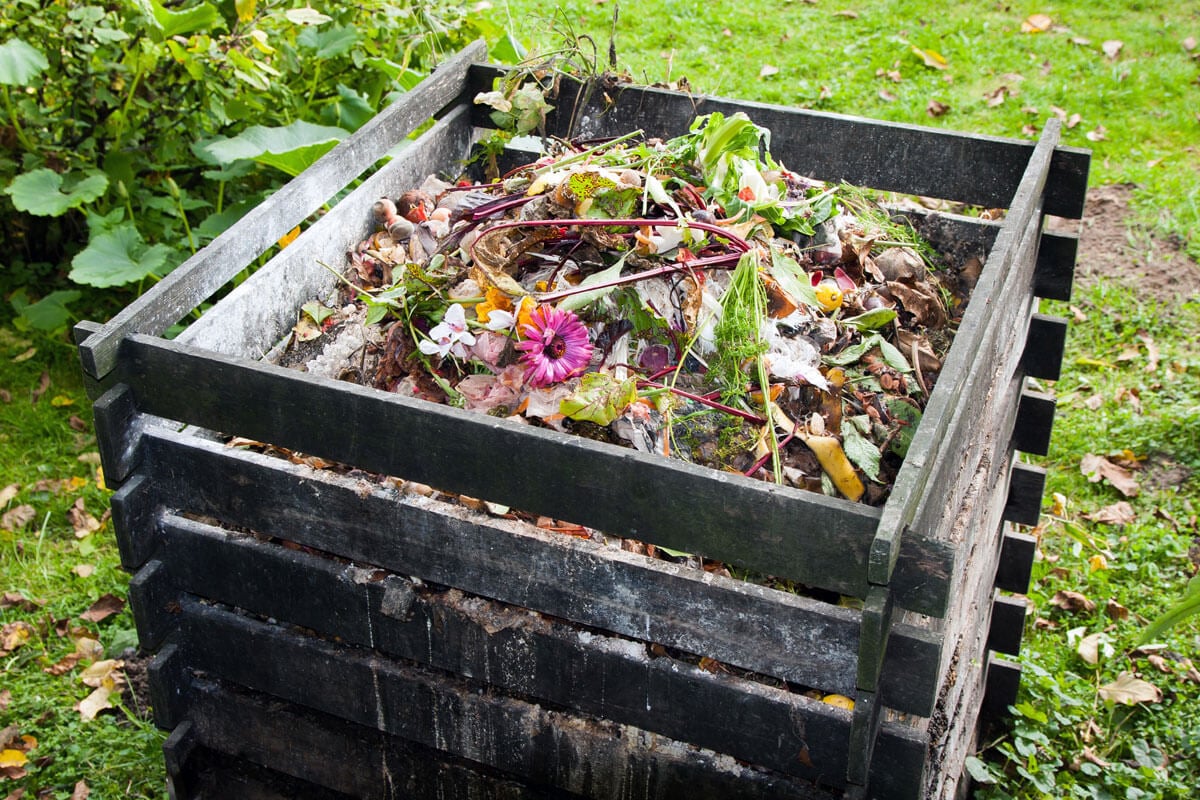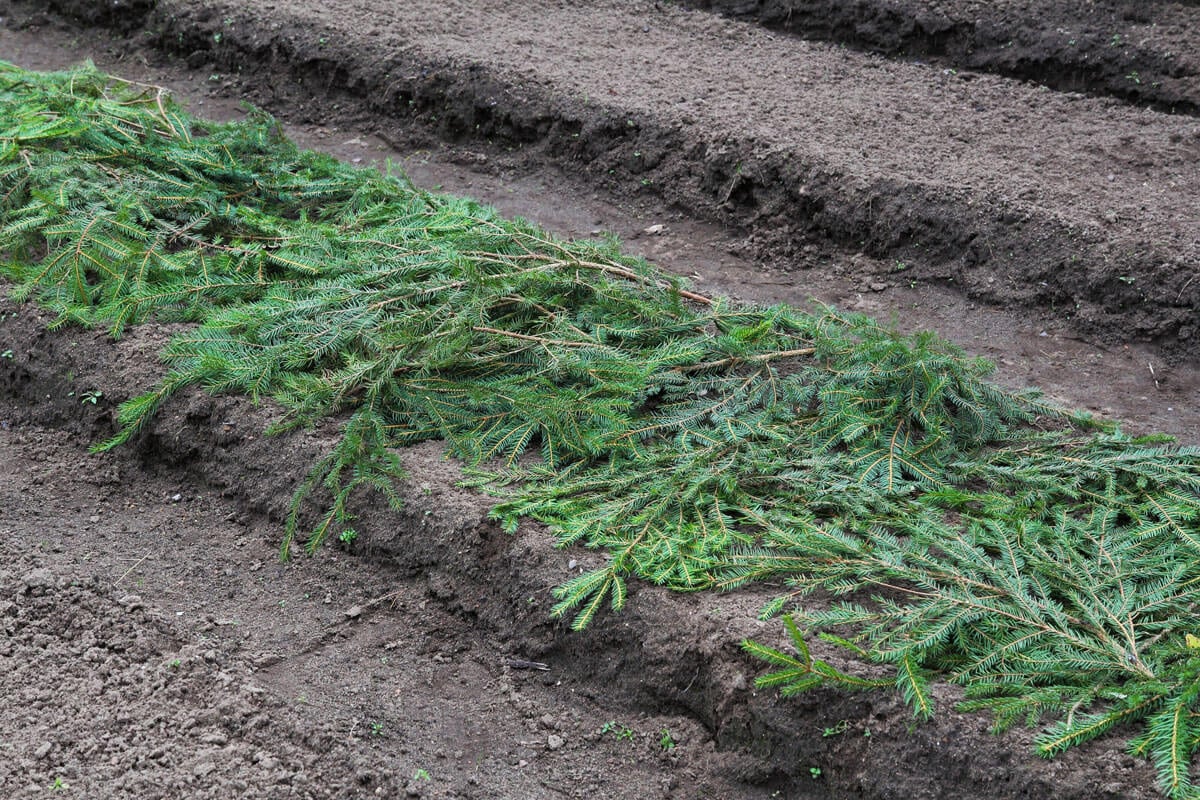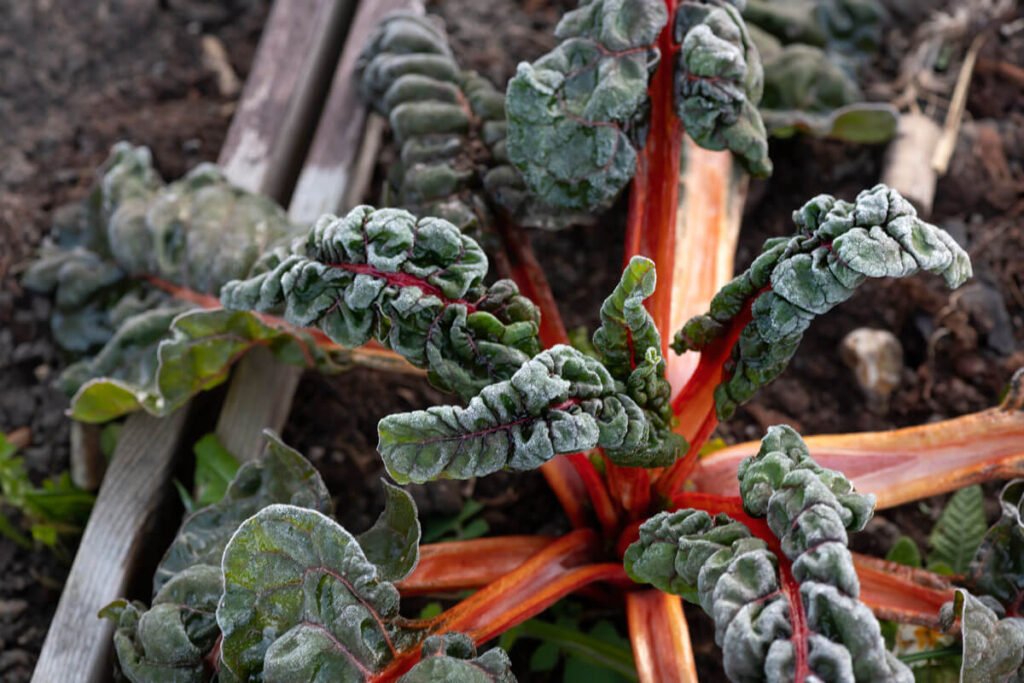As temperatures drop in Autumn, it’s time to place your backyard to mattress for the season. Doing so will shield your crops from injury or dying because of chilly, and cut back the quantity of backyard work you have to do within the spring. Listed below are 12 steps to making ready your backyard for winter.
1. Clear Particles, Tools & Provides
- Clear your vegetable backyard beds of all spent crops and weeds, and compost them. Nevertheless, put any seedy, diseased or pest-ridden crops into the trash or burn pile slightly than the compost, to keep away from spreading weeds, pests or illnesses to subsequent yr’s backyard. Depart overwintering greens like kale or cabbage and, if doable, cowl with chilly frames or row covers for steady winter harvest.
- Rake your fallen leaves into low piles and run the mower over them to shred them. Use this mulch in your bushes and perennial beds, or as fodder in your compost bin. If you happen to don’t wish to shred them, rake your leaves onto a big sheet or tarp, then drag and dump them right into a nook of your yard to offer pollinators like bumblebees some winter safety.
- Take down any stakes, cages, trellises, row covers or different tools that stay within the backyard. Clear off any soil or plant materials, then stack and retailer them in your storage or toolshed.
- Wash, sanitize and retailer your seed trays and backyard pots. This retains mildew, fungus, and potential illness from spreading to your subsequent crop.
- Empty any outside planters or containers that may rust or maintain water and crack in the course of the winter. Retailer them the other way up.
2. Harvest and Rebuild Compost
It’s doubtless that the fabric you composted over the summer time is completed and able to go. Use this wealthy, darkish humus to amend your backyard beds or fertilize lawns and landscaping.
By cleansing out your completed compost, you now have room for a brand new batch! Construct your fall compost pile with shredded autumn leaves, grass clippings, or seed-free straw layered with spent crops from cleansing up your backyard, kitchen scraps, and different moist, inexperienced matter.
Associated


3. Check and Amend Your Soil
Fall is an optimum time to get a soil take a look at completed. soil take a look at will let you know:
- Soil pH
- Ranges of potassium (Okay), phosphorus (P), calcium (Ca), magnesium (Mg), and sulfur (S)
- Stage of natural matter
- Lead content material (Some soils close to outdated houses have been contaminated with lead paint, and will not be secure for rising meals.)
To take a pattern for a soil take a look at, take a small trowel of dust from 5-6 completely different areas of your backyard (extra, in case your backyard may be very massive), about 6 inches under the floor. It is best to gather about two or three cups of soil altogether.


Combine the samples effectively, then unfold the combination out on a tray to let it air dry. Take away stones and different particles. As soon as dry, bag up and ship your pattern to your native Cooperative Extension workplace. This listing of extension offices in every state will assist. If you happen to backyard organically, let the workplace know if you submit your soil pattern.
When you get the outcomes, you’ll sometimes be given fertilizer suggestions. Fall is the most effective time of yr so as to add soil amendments like compost, manure, bone meal, lime, kelp, or rock phosphate as a result of this offers them time to start out breaking down and turning into biologically energetic. It additionally saves you time in the course of the busy Spring season!
After including the beneficial vitamins to your soil, add a pair inches of compost or composted manure on the highest of your beds, then mulch or sow a canopy crop (see under) to forestall winter rains from washing the vitamins out of your soil.
4. Plant Timber, Shrubs and Perennials
Fall is the ideal time for planting trees, shrubs and perennials as a result of planting a month or two earlier than a tough frost permits the roots to turn out to be established earlier than winter units in. Timber and shrubs planted within the fall are additionally higher outfitted to take care of warmth, pests and drought the next season.
In Autumn, you possibly can plant any shade, fruit or nut tree, blackberries, blueberries, garlic and shallots, asparagus, rhubarb, and daylilies, amongst different hardy perennials. Keep away from planting tender, broad-leaved evergreens like rhododendrons, azaleas, boxwoods and hollies within the fall, as a result of they won’t doubtless survive winter chilly and wind so quickly after planting.
5. Cowl Up Backyard Beds
Masking and defending your soil from the weather is important to retaining it wholesome and fertile for rising crops. Earlier than winter, it is best to cowl your empty backyard beds so that you just can’t see any naked soil utilizing one of many following strategies:
Mulch
Including a thick layer of mulch atop your backyard beds can assist ease the transition into winter. Mulch protects soil from being washed away, conserves moisture, slowly provides vitamins and natural matter to your soil because it breaks down, and prevents weeds from sprouting within the Spring.
After amending your soil, cowl your beds in a 1-3 inch thick layer of mulch. Good selections embrace:
- shredded leaves,
- dried grass clippings,
- seed-free straw (not hay),
- aged wooden chips,
- pine needles,
- cocoa or hazelnut hulls,
- pine or spruce boughs,
- brown cardboard packing containers or outdated wool rugs.
No matter you select, simply ensure you use an natural, weed-free supply. A poor supply of mulch can poison your soil or fill it with noxious weeds.


Plant Cowl Crops
A canopy crop is like inexperienced compost rising in your soil. Cowl crops assist forestall soil erosion, break up compacted soils and enhance natural matter in your backyard beds. Cowl crops may also mobilize minerals within the soil, repair nitrogen, and assist sequester carbon from the ambiance.
Finest cowl crop selections for dwelling gardeners are nitrogen-fixing crops from the legume household, corresponding to Berseem clover and area peas, or annual grasses corresponding to oats or barley. These 4 crops are the best to show into the soil within the Spring.
Scatter cowl crop seed round your backyard beds (such as you’re feeding your chickens) at the very least one month earlier than the primary frost in your space, so that you get as a lot development as doable earlier than freezing temperatures kill all the things. The quantity of seed to plant will range by species, however usually, you’ll want 2 to three kilos of canopy crop seed per 1,000 sq. ft of backyard mattress.
Cowl massive seeds like peas with one-quarter to one-half inch of soil or compost. Small seeds like clover needs to be left on the floor and calmly raked in. Unfold a skinny layer of straw over the mattress to guard the realm from wind and runoff.
After a tough freeze or snow, your cowl crop will die and slowly compost all through the winter, stopping erosion and including vitamins to your backyard. Any that continues to be will be combined into the soil within the spring.
Set up Row Covers or Chilly Frames
If you happen to plan to maintain cold-tolerant crops like kale, cabbage and spinach going in the course of the winter, you will want to put in row covers or chilly frames to guard them from freezing rain and snow.


Row covers and chilly frames work like small greenhouses over your backyard beds, defending your winter-hardy crops so you possibly can harvest them all through the season (or give them a head-start within the Spring).


6. Divide and Plant Bulbs
- Fall is the optimum time to plant (or transplant) flowering bulbs like crocuses, daffodils, lilies, irises or tulips. (Fall can also be the time when it is best to plant garlic.)
- You probably have any flowering bulbs that appeared crowded or straggly in the course of the rising season, Fall can also be the time to dig up and divide them. Dig 4-8 inches away from the plant’s stems and leaves, fastidiously loosening the soil. Elevate bulbs gently and separate some for rapid transplanting elsewhere within the backyard.
- As soon as frost blackens the leaves of dahlias, gladioli, and cannas, fastidiously dig them up and allow them to dry indoors on newspaper for a number of days. Then pack them in sawdust or shredded newspaper and retailer in a darkish, humid spot at 40° to 50°F (5° to 10°C) till Spring.
7. Put together Berries for Winter
Berries are typically hardy perennials, however some do require fall pruning and care. In early to mid-fall:
- Cowl strawberry beds with a thick layer of seed-free straw mulch.
- Prune summer-bearing raspberries, leaving six of the strongest brown canes for each 1 foot of the patch.
- Lower fall-bearing raspberries to the bottom after they’ve borne fruit. New canes will come up within the Spring.
- Give blueberries and blackberries a skinny layer of wooden chip or pine needle mulch to guard them over winter.
8. Put together Perennials and Herbs for Winter
Many perennials and herbs are robust, and simply want a layer of mulch round their roots to guard them over the winter. Just a few although, like rosemary or lavender, would possibly want some extra safety (or to be potted up and introduced in) to outlive the coldest temperatures in your space.
Most perennials can wait to be reduce till the spring, particularly if they’ve a number of seedheads (like coneflowers or poppies) that the birds can take pleasure in all winter. Nevertheless, there are some perennials it is best to reduce in Fall to keep away from spreading illnesses—particularly bee balm, phlox, bearded irises, peonies, rudbeckia, and hostas—plus anything that carried pests or illness in your yard in the course of the rising season.
Wait to chop perennials again till the bottom has frozen exhausting and the foliage has died, so you already know the crops are dormant. Prune exhausting, leaving about 3 inches of stem above floor, and mulch with a thick layer of leaves, wooden chips, or straw.
9. Put together Timber and Shrubs for Winter
- Put a 3-inch layer of mulch round all of your bushes and shrubs to guard their roots for the winter. Wooden chips or shredded leaves are wonderful selections for this. Simply ensure that the mulch does NOT contact or pile up across the trunk of the tree, which might trigger rot and illness.
- Don’t prune bushes and shrubs within the Fall, even when they appear overgrown. Wait till they’ve misplaced all their leaves (if deciduous), and some exhausting frosts have made them dormant for the winter. That approach, you possibly can see the construction of the branches extra clearly, and your cuts will neither weep nor draw bugs and illness.
- For younger fruit bushes, wrap the decrease trunk of the tree with a pestproof tree wrap, which is able to forestall freezing and thawing accidents to the trunk, and cease mice and voles from gnawing on the bark in the course of the winter.
- You probably have younger or delicate crops that could possibly be harmed by heavy wind, snow and ice, encircle them with a cylinder of rooster wire fencing, or drive stakes into the bottom at 4 corners across the plant, and wrap burlap or an outdated sheet across the stakes, securing it on the high, middle, and backside with twine. Fill the area between the plant and the barrier round it with straw or shredded leaves as insulation.


10. Flip Off the Irrigation System
You’ll want to disconnect your hoses, sprinklers and irrigation methods from the spigot earlier than the primary fall frost so that they don’t get broken by freezing winter temperatures. In hotter climates, you possibly can often simply disconnect the system from the hose spigot and permit the water to empty out. Nevertheless, in colder climates, it would be best to both blast all of the water out of your irrigation system with an air compressor, or simply carry all the things inside for the winter.
Empty, wind and retailer your backyard hoses in your storage or toolshed, together with any hose nozzles and sprinkler attachments they use. 5-gallon buckets work nice for this.
Associated
11. Defend Birds and Pollinators
- Hold chicken feeders topped up. Birds particularly admire fatty, high-energy meals (corresponding to nuts or suet) in the course of the chilly months.
- Fallen leaves supplies habitat, insulation, and safety for insect pollinators. Depart a small pile of leaves in a nook of your yard to offer bumblebees and butterflies some locations to hibernate.


12. Clear and Keep Instruments and Tools
- Repair any damaged issues in your backyard. In case your hose or irrigation line is leaking, your raised mattress has misplaced a aspect, or the doorways are falling off your backyard shed, now’s the time to restore them.
- Usher in all backyard instruments and wash them completely to take away dust and particles. Take away any rust you see with sandpaper or a wire brush. Sharpen your hoes and shovels with a fundamental file, and use a whetstone to sharpen your pruners.
- Rub the surfaces of your steel instruments with a rag coated in Canola oil. It will assist shield the steel from oxygen and prolong your instruments’ lives for an additional yr.
- Clear off any dust, grass or plant particles, then drain the gasoline tank in your garden mower, weed whacker, and every other energy tools. Seek the advice of the proprietor’s handbook for different crucial winter upkeep.
Now go and revel in your Autumn season! In any case that tough work, you deserve it!
